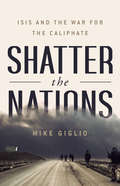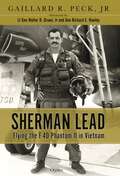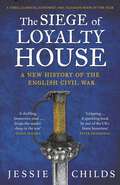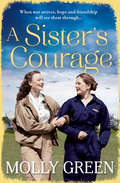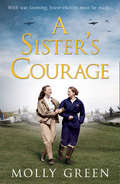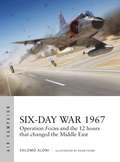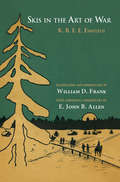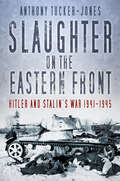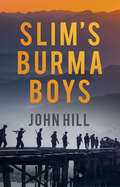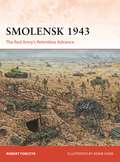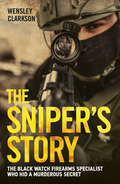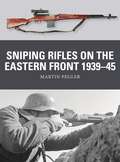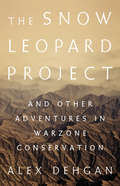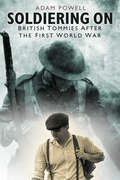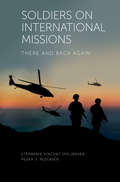- Table View
- List View
Shatter the Nations: ISIS and the War for the Caliphate
by Mike GiglioUnflinching dispatches of an embedded war reporter covering ISIS and the unlikely alliance of forces who came together to defeat it.The battle to defeat ISIS was an unremittingly brutal and dystopian struggle, a multi-sided war of gritty local commandos and militias. Mike Giglio takes readers to the heart of this shifting, uncertain conflict, capturing the essence of a modern war.At its peak, ISIS controlled a self-styled "caliphate" the size of Great Britain, with a population cast into servitude that numbered in the millions. Its territory spread across Iraq and Syria as its influence stretched throughout the wider world.Giglio tells the story of the rise of the caliphate and the ramshackle coalition--aided by secretive Western troops and American airstrikes--that was assembled to break it down village by village, district by district. The story moves from the smugglers, traffickers, and jihadis working on the ISIS side to the victims of its zealous persecution and the local soldiers who died by the thousands to defeat it. Amid the battlefield drama, culminating in a climactic showdown in Mosul, is a dazzlingly human portrait of the destructive power of extremism, and of the tenacity and astonishing courage required to defeat it.
Shatter the Nations: ISIS and the War for the Caliphate
by Mike GiglioUnflinching dispatches of an embedded war reporter covering ISIS and the unlikely alliance of forces who came together to defeat it.The battle to defeat ISIS was an unremittingly brutal and dystopian struggle, a multi-sided war of gritty local commandos and militias. Mike Giglio takes readers to the heart of this shifting, uncertain conflict, capturing the essence of a modern war.At its peak, ISIS controlled a self-styled "caliphate" the size of Great Britain, with a population cast into servitude that numbered in the millions. Its territory spread across Iraq and Syria as its influence stretched throughout the wider world.Giglio tells the story of the rise of the caliphate and the ramshackle coalition--aided by secretive Western troops and American airstrikes--that was assembled to break it down village by village, district by district. The story moves from the smugglers, traffickers, and jihadis working on the ISIS side to the victims of its zealous persecution and the local soldiers who died by the thousands to defeat it. Amid the battlefield drama, culminating in a climactic showdown in Mosul, is a dazzlingly human portrait of the destructive power of extremism, and of the tenacity and astonishing courage required to defeat it.
Sherman Lead: Flying the F-4D Phantom II in Vietnam
by Gaillard R. Peck, JrWritten by a pilot who flew near-daily combat missions, this engrossing book is the story of one man, his colleagues and his machine, the mighty F-4 Phantom II, at war.Sherman Lead is the gripping story of a year flying the F-4 in combat during the Vietnam War, told through the eyes of a fighter pilot. Operating out of Ubon Royal Thai Air Base, Thailand in 1968–69, Gail Peck and his squadronmates in the 433rd Tactical Fighter Squadron of the 8th Tactical Fighter Wing were tasked with flying combat missions into North Vietnam and Laos at this time as part of Operations Rolling Thunder and Steel Tiger. The F-4 was heavily involved in the air-to-ground mission at this time, with targets being well defended by enemy anti-aircraft artillery and surface-to-air missiles. Gail Peck's arrival in-theatre coincided with the beginning of electro-optical and laser guided 'smart' bomb combat operations. There were periods of fierce combat interspersed with lulls, and the fighting was intense and unforgettable to those who participated. Some men lived through it, and others died without a clear understanding of why.
The Siege of Loyalty House: A new history of the English Civil War
by Jessie Childs'Extraordinary, thrilling, immersive... at times almost Tolstoyan in its emotional intelligence and literary power' Simon SchamaIt was a time of climate change and colonialism, puritans and populism, witch hunts and war. A greater proportion of the British population died in the civil wars of the seventeenth century than in the world wars of the twentieth. Jessie Childs recovers the shock of this conflict by plunging us into one of its most extraordinary episodes: the siege of Basing House. To the parliamentarians, the royalist stronghold was the devil's seat. Its defenders called it Loyalty House. We follow artists, apothecaries, merchants and their families from the revolutionary streets of London to the Marquess of Winchester's mist-shrouded mansion. Over two years, they are battered, bombarded, starved and gassed. From within they face smallpox, spies and mutiny. Their resistance becomes legendary, but in October 1645, Oliver Cromwell rolls in the heavy guns and they prepare for a last stand. Drawing on unpublished manuscripts and the voices of dozens of men, women and children caught in the crossfire, Childs weaves a thrilling tale of war and peace, terror and faith, savagery and civilisation. The Siege of Loyalty House is an immersive and electrifying account of a defining episode in a war that would turn Britain - and the world - upside down. 'Brilliant. Original. Gripping.' - Antonia Fraser
The Silversmith's Daughter (Birmingham Jewellery Quarter #2)
by Annie MurrayCourage, passion, ambition and tragedy under the storm clouds of war from the top ten bestselling author. It is 1915 and Daisy Tallis, headstrong, impassioned and a talented young silversmith, is desperate to make her parents proud. The family business is at the very heart of Birmingham’s jewellery quarter community.Daisy, having studied at the city’s celebrated School of Jewellery and Silversmithing, is now skilled enough to be a teacher. It is at the school that she meets her father’s notorious rival, James Carson. Although he’s a married man, Daisy finds herself dangerously drawn to his flattery.As war tightens its grip on the country, the jewellery quarter is thrown into turmoil as the men are forced to decide who will enlist. When tragedy strikes, can Daisy and her mother find what it takes to hold both the business and the family together?‘Full of drama, love and compassion’ Take a Break‘A tale of passion and empathy that will keep you hooked’ Woman’s Own
A Single Thread: A Novel
by Tracy ChevalierFROM THE GLOBALLY BESTSELLING AUTHOR OF GIRL WITH A PEARL EARRING ‘Bittersweet … dazzling’ Guardian ‘Deeply pleasurable … the ending made me cry’ The Times ‘Told with a wealth of detail and narrative intensity’ Penelope Lively
Sioux Warrior vs US Cavalryman: The Little Bighorn campaign 1876–77 (Combat)
by Ron FieldFollowing the discovery of gold deposits, in December 1875 the US Government ordered the indigenous population of the Black Hills in what is now South Dakota and Wyoming, the Sioux, to return to the Great Sioux Reservation. When the Sioux refused, the US Army sent forces into the area, sparking a conflict that would make Lieutenant Colonel George Custer, Chief Sitting Bull, Crazy Horse, and others household names around the world. Examining a series of engagements in the Black Hills War, including Rosebud, Little Bighorn, and Slim Buttes, this fully illustrated study assesses the forces fighting on both sides in this momentous campaign, casting light on the origins, tactics, armament, and battlefield performance of the US Cavalry and their Sioux opponents at the height of the Indian Wars.
A Sister’s Courage (The Victory Sisters #1)
by Molly GreenIn the midst of war, she knew her place was not at home…
A Sister’s Courage (The Victory Sisters #1)
by Molly GreenIt’s 1939 and the threat of war hangs over Britain…
Six-Day War 1967: Operation Focus and the 12 hours that changed the Middle East (Air Campaign #10)
by Shlomo AloniOn one day in June, the balance of air power in the Middle East was turned upside down by perhaps the most ruthlessly effective air superiority campaign in history – Operation Moked, or Focus. In 1967, the Israeli Air Force was outnumbered more than two to one by the jets of hostile Egypt, Syria, Jordan and Iraq. Operation Focus was Israel's ingenious strike plan to overturn the balance. At 0745hrs on June 6, Israeli jets hit Egypt's airfields simultaneously, first bombing runways and then strafing aircraft. Another 20 follow-up missions were already in the air, initially scheduled to hit every five minutes. This new history of Operation Focus explains how the concept for Focus was devised and meticulously planned, the astonishing rate of serviceability and turnaround speed it required from ground crews, and how the relentless tempo of strikes shattered one air force after another. It is the story of how Israel's victory in the Six-Day War began with a single, shocking day.
Skis in the Art of War (NIU Series in Slavic, East European, and Eurasian Studies)
by K. B. EimeleusK. B. E. E. Eimeleus was ahead of his time with his advocacy of ski training in the Russian armed forces. Employing terminology never before used in Russian to describe movements with which few were familiar, Skis in the Art of War gives a breakdown of the latest techniques at the time from Scandinavia and Finland. Eimeleus's work is an early and brilliant example of knowledge transfer from Scandinavia to Russia within the context of sport.Nearly three decades after he published his book, the Finnish army, employing many of the ideas first proposed by Eimeleus, used mobile ski troops to hold the Soviet Union at bay during the Winter War of 1939–40, and in response, the Soviet government organized a massive ski mobilization effort prior to the German invasion in 1941. The Soviet counteroffensive against Nazi Germany during the winter of 1941–42 owed much of its success to the Red Army ski battalions that had formed as a result of the ski mobilization. In this lucid translation that includes most of the original illustrations, scholar and former biathlon competitor William D. Frank collaborates with E. John B. Allen, known world-wide for his work on ski history.
Slaughter on the Eastern Front: Hitler and Stalin’s War 1941-1945
by Anthony Tucker-JonesIn the summer of 1941, a collective madness overtook Adolf Hitler and his senior generals. They convinced themselves that they could take on and defeat a superpower in the making – the Soviet Union. Foolishly, they thought in a swift campaign they could smash the Red Army and force Stalin to sue for peace, despite dire warnings that Stalin was amassing a reserve army of more than 1 million men on the Volga. The end result would be such carnage that it would tear the German forces apart. In his major reassessment of the war on the Eastern Front, Anthony Tucker-Jones casts new light on the brutal fighting, including such astounding German defeats as at Stalingrad, Kursk, Minsk and, finally, Berlin. He controversially contends that from the very start intelligence officers on both sides failed to influence their leadership resulting in untold slaughter. He also reveals the shocking blunders by Hitler, Stalin and even Churchill that led to the appalling, needless destruction of Hitler’s armed forces as early as the winter of 1941–42. Step by step, Tucker-Jones describes how the German war machine fought to its very last against a relentless enemy, fully aware that defeat was inevitable.
Slim's Burma Boys
by John HillThe battle for Burma was the longest and bloodiest campaign fought by the British in the Second World War. John Hill, one of the few men to survive the entire campaign, shares the personal experiences of men who fought against the merciless Japanese Army, painting a vivid picture of what it was like to be there – the intensity of war, the adrenaline rush and the fear and courage of those who took part in swollen river crossings, patrols, ambushes, skirmishes and major actions against a ruthless and determined enemy who would never surrender. Hill’s memoir is a fitting tribute to the courageous men who fought in one of the most gruelling campaigns of the Second World War.
Smolensk 1943: The Red Army's Relentless Advance (Campaign #331)
by Robert ForczykWith the German defeat at Kursk, the Soviet Stavka (high command) ordered the Western and Kalinin Fronts to launch Operation Suvorov in order to liberate the city of Smolensk. The Germans had held this city for two years and Heeresgruppe Mitte's (Army Group Centre) 4. Armee had heavily fortified the region. The Soviet offensive began in August 1943 and they quickly realized that the German defences were exceedingly tough and that the Western Front had not prepared adequately for an extended offensive. Consequently, the Soviets were forced to pause their offensive after only two weeks, in order to replenish their combat forces and then begin again. The German 4. Armee was commanded by Generaloberst Gotthard Heinrici, one of the Wehrmacht's top defensive experts. Although badly outnumbered, Heinrici's army gamely held off two Soviet fronts for seven weeks. Eventually, the 4. Armee's front was finally broken and Smolensk was liberated on 25 September 1943. However, the Western Front was too exhausted to pursue Heinrici's defeated army, which retreated to the fortified cities of Vitebsk, Orsha and Mogilev; the 4. Armee would hold these cities until the destruction of Army Group Centre in June 1944. Operation Suvorov focuses on a major offensive that is virtually unknown in the West and which set the stage for the decisive defeat of Heeresgruppe Mitte in the next summer offensive.
The Sniper's Story: The Black Watch firearms specialist who hid a murderous secret
by Wensley ClarksonLocated in the bleak and desolate Orkney Islands, THE SNIPER'S STORY twists and turns through a harsh, windswept environment where secrets thrive and a member of the community can seemingly get away with murder. THE SNIPER S STORY will tell for the first time the truth about one of Britain s most bizarre and chilling crimes, as well as examining in depth, that age old question; Are Some People Born To Kill?
Sniping Rifles on the Eastern Front 1939–45 (Weapon #67)
by Martin PeglerThe Soviet Union had developed a significant sniping force by 1939, but the extraordinary skill and cunning displayed by Finnish snipers during the Winter War forced the Soviets to innovate. On the other side, German sniping suffered from a lack of standardization of weapons and a lack of marksmen deployed at the start of the Great Patriotic War (1941–45). There were few heroes in the conflict, but on both sides, the snipers were idolized – especially on the Soviet side, gaining almost mythical status.As well as traditional bolt-action weapons, both sides used several types of semi-automatic rifle, such as the SVT-38 and the Gew 41. Offering greater firepower at the expense of long-range accuracy, such weapons would be profoundly influential in the postwar world. Fully illustrated, this absorbing study investigates the development of sniping weapons and techniques on World War II's Eastern Front.
The Snow Leopard Project: And Other Adventures in Warzone Conservation
by Alex DehganThe remarkable story of the heroic effort to save and preserve Afghanistan's wildlife-and a culture that derives immense pride and a sense of national identity from its natural landscape.Postwar Afghanistan is fragile, volatile, and perilous. It is also a place of extraordinary beauty. Evolutionary biologist Alex Dehgan arrived in the country in 2006 to build the Wildlife Conservation Society's Afghanistan Program, and preserve and protect Afghanistan's unique and extraordinary environment, which had been decimated after decades of war.Conservation, it turned out, provided a common bond between Alex's team and the people of Afghanistan. His international team worked unarmed in some of the most dangerous places in the country-places so remote that winding roads would abruptly disappear, and travel was on foot, yak, or mule. In The Snow Leopard Project, Dehgan takes readers along with him on his adventure as his team helps create the country's first national park, completes the some of the first extensive wildlife surveys in thirty years, and works to stop the poaching of the country's iconic endangered animals, including the elusive snow leopard. In doing so, they help restore a part of Afghan identity that is ineffably tied to the land itself.
The Snow Leopard Project: And Other Adventures in Warzone Conservation
by Alex DehganThe remarkable story of the heroic effort to save and preserve Afghanistan's wildlife-and a culture that derives immense pride and a sense of national identity from its natural landscape. Postwar Afghanistan is fragile, volatile, and perilous. It is also a place of extraordinary beauty. Evolutionary biologist Alex Dehgan arrived in the country in 2006 to build the Wildlife Conservation Society's Afghanistan Program, and preserve and protect Afghanistan's unique and extraordinary environment, which had been decimated after decades of war. Conservation, it turned out, provided a common bond between Alex's team and the people of Afghanistan. His international team worked unarmed in some of the most dangerous places in the country-places so remote that winding roads would abruptly disappear, and travel was on foot, yak, or mule. In The Snow Leopard Project, Dehgan takes readers along with him on his adventure as his team helps create the country's first national park, completes the some of the first extensive wildlife surveys in thirty years, and works to stop the poaching of the country's iconic endangered animals, including the elusive snow leopard. In doing so, they help restore a part of Afghan identity that is ineffably tied to the land itself.
Snowbound Surrender: Their Mistletoe Reunion / Snowed In With The Rake / Christmas With The Major (Mills And Boon Historical Ser.)
by Laura Martin Louise Allen Christine MerrillStay snowed-in this Christmas… …with these three Regency short stories!
Soldier Prince's Secret Baby Gift (A Crown by Christmas #2)
by Kate HardyOne magical night… …could ignite a royal scandal!
Soldiering On: British Tommies After the First World War
by Adam PowellA month after the Armistice, Prime Minister David Lloyd George promised to make Britain a ‘land fi t for heroes’. At the time, it was widely believed. Returning soldiers expected decent treatment and recognition for what they had done, yet the fi ne words of 1918 were not matched by actions. The following years saw little change, as a lack of political will watered down any reform. Beggars in trench coats became a common sight in British cities. Soldiering On examines how the Lost Generation adjusted to civilian life; how they coped with physical and mental disabilities and struggled to find jobs or even communicate with their family. This is the story of men who survived the trenches only to be ignored when they came home. Using first-hand accounts, Adam Powell traces the lives of veterans from the first day of peace to the start of the Second World War, looking at the many injustices ex-servicemen bore, while celebrating the heroism they showed in the face of a world too quick to forget.
Soldiers on International Missions: There and Back Again
by Stéphanie Vincent Lyk-Jensen Peder J. PedersenThis book contributes important new insights into how deployment on international military missions affects soldiers and their lives. Using both quantitative data and in-depth interviews, the authors provide a longitudinal perspective covering the participants in these missions before, during, and after deployment on a large range of life outcomes. The research centres around four key themes; who are the men and women who choose to be deployed; why do they choose to be deployed; what challenges do these soldiers face before, during, and after returning home from a mission; and what are the consequences of deployment for the soldiers’ individual lives? Danish soldiers provide an illustrative study and data is drawn from administrative registries and is supplemented with broader surveys of present and former soldiers, in-depth interviews of parents and other relatives, and support group professionals. Using specifically constructed datasets and comparing these soldiers with relevant control groups, this book offers a unique analysis of the impact of deployment on important issues such as personal finances, the labour market, criminal activity, smoking and drinking, and overall health. Mapping a full portrait of the men and women who choose to be deployed, and explaining both their initial motivations, this book highlights the challenges they face before and during deployment and upon returning home.
Soldiers on International Missions: There and Back Again
by Stéphanie Vincent Lyk-Jensen Peder J. PedersenThis book contributes important new insights into how deployment on international military missions affects soldiers and their lives. Using both quantitative data and in-depth interviews, the authors provide a longitudinal perspective covering the participants in these missions before, during, and after deployment on a large range of life outcomes. The research centres around four key themes; who are the men and women who choose to be deployed; why do they choose to be deployed; what challenges do these soldiers face before, during, and after returning home from a mission; and what are the consequences of deployment for the soldiers’ individual lives? Danish soldiers provide an illustrative study and data is drawn from administrative registries and is supplemented with broader surveys of present and former soldiers, in-depth interviews of parents and other relatives, and support group professionals. Using specifically constructed datasets and comparing these soldiers with relevant control groups, this book offers a unique analysis of the impact of deployment on important issues such as personal finances, the labour market, criminal activity, smoking and drinking, and overall health. Mapping a full portrait of the men and women who choose to be deployed, and explaining both their initial motivations, this book highlights the challenges they face before and during deployment and upon returning home.
A Soldier's Return: A Soldier's Return The Daddy Makeover (The Women of Brambleberry House #4)
by RaeAnne ThayneThe Women of Brambleberry House are back!
